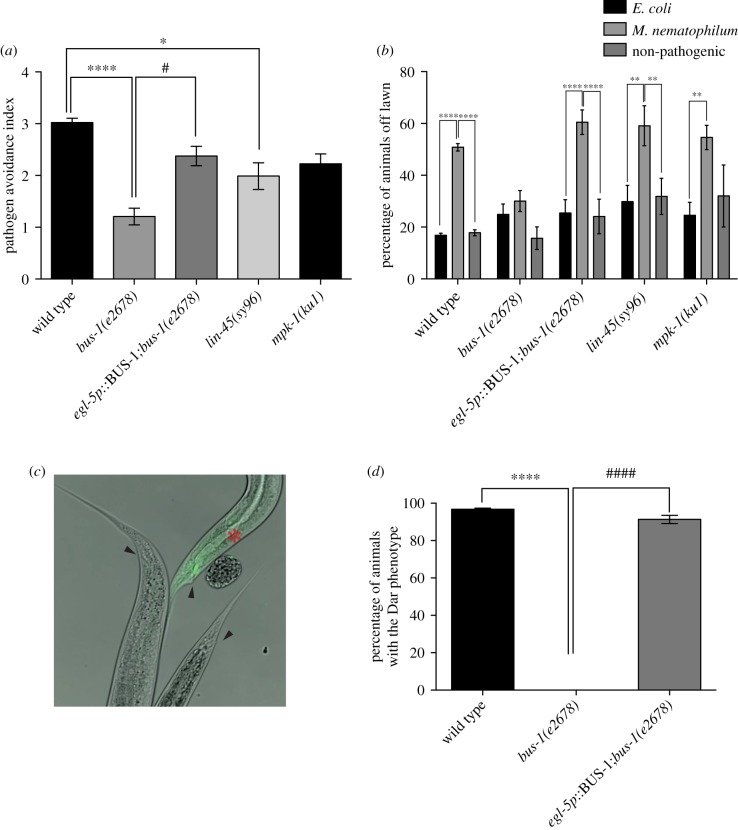Figure 5.
Efficient avoidance of pathogen-contaminated lawns requires pathogen attachment to rectal epithelial cells. (a) Pathogen avoidance index is decreased in bus-1(e2678) and lin-45(sy96) animals, but not in mpk-1(ku1) animals. (b) The percentage of bus-1(e2678) animals avoiding M. nematophilum-contaminated bacterial lawns is significantly decreased when compared with wild type. The bus-1(e2678) avoidance defect can be rescued by expression of BUS-1 cDNA in rectal epithelial cells (egl-5p∷BUS-1;bus-1(e2678)) (a and b). (c,d) Expression of BUS-1 cDNA in the rectal epithelial cells of bus-1(e2678) using a fragment of the egl-5 promoter (egl-5p∷BUS-1;bus-1(e2678)) rescues the Bus phenotype of bus-1(e2678) animals. (c) SYTO13-labelled M. nematophilum can be observed attaching to the rectal opening of transgenic (labelled with red asterisk), but not bus-1(e2678) animals. Rectal openings are indicated with black arrowheads. * indicates significance relative to wild type. # indicates significance relative to bus-1(e2678) (*p ≤ 0.05, ****p ≤ 0.0001. See Material and methods for details of statistical analysis).

